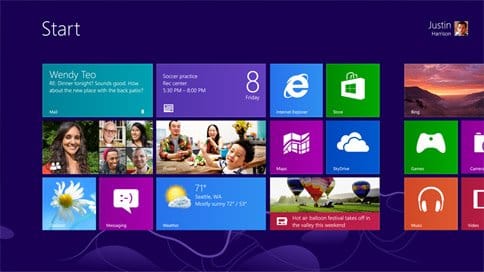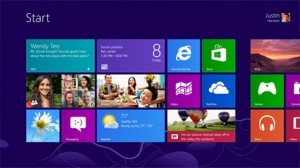Windows 8 Migration Tips for Small Businesses

 Unless you’ve been living under a rock for the last few months, you’ve seen the announcement of the release of Windows 8 from Microsoft.
Unless you’ve been living under a rock for the last few months, you’ve seen the announcement of the release of Windows 8 from Microsoft.
For individuals purchasing a new computer you’ll most likely be forced to buy one that has Windows 8 installed. This may cause some consternation at first with having to learn a new operating system…but after a few days, weeks or months, you’ll pick it up. If the idea of another new Windows release scares you, you’ll be able to find computers with Windows 7 installed if you look hard enough (e.g., Dell sells computers for “business” that will have Windows 7 installed).
For businesses looking to roll out new computers now (or over the next year or so), you’ll be able to continue to use Windows 7 but a migration plan to Windows 8 is most likely being discussed.
If you are on the fence about migrating to Windows 8, it might be worth taking a few minutes to review some of the sites out there focused on what Windows 8 delivers. Dell has a pretty good page titled What You Need to Know About Windows 8 that provides some basic information about the new OS.
Large organizations have most likely been planning a Windows 8 migration for quite some time now using pre-release versions of Windows 8. This allows IT professionals to test out features, functionality and think through integration and roll-0ut plans. For most of these organizations, there’s a group of people focused on this migration plan and how they will (or won’t) roll it out over the coming months/years.
I’ve spent time in projects like this and can tell you there is quite a lot of work involved for an organization of any size to roll-out a new operating system. Not only do new processes and procedures have to be created but documentation has to be updated, user training created and a full roll-out of new computers has to be performed.
From my experience, the decision to migrate to a new operating system (OS) is one that shouldn’t be taken lightly. The large organizations have the abilities, skills and people to plan out these types of migrations, but many small businesses are completely in the dark when it comes to migrating to a new OS.
Most small businesses have no capabilities to plan for a migration like this. The IT staff of most small organizations are completely understaffed or non-existent. If an IT staff exists, they’re usually overloaded by just keeping things running on a shoe-string budget. Rolling out a new OS is just adding to that overload.
For the small business owners and managers out there, it is still worth finding some time to look at Windows 8 and think through a migration plan. As a way to kick-off that thought process, a few steps that you can take to better prepare for Windows 8 are provided below.
- Get buy-in from your users – whether you have 100 users or 10 users, if they are dead-set against Windows 8 (or any OS change), you may want to spend time understanding and addressing their concerns. You can built the best OS migration plan in the world, but if your users mutiny when it rolls out, you are in trouble.
- Test the OS – This is time consuming and may require some outlay of capital to get a new Windows 8 computer (or computers), but it is money well spent. Find a tech-savvy user within your company (or better yet, a few of them) and provide them with a Windows 8 computer. Start this test slowly and allow them to keep their old machines for day-to-day work and have them slowly migrate to the new machines over a few weeks. Have them test all your organization’s applications from a user’s standpoint. Ask them to do everything they would normally do with the old machine and have them note any issues they find in a central document/repository. These ‘notes’ will need to be addressed before a larger roll-out.
- Use a “roving” computer – When buying your ‘test’ computers, buy an extra machine that can be passed around the organization to multiple people. The more people that can get their hands on a new machine with the new OS, the more change you have of dispelling any negative feelings/rumors that might exist. Build a calendar that allows people to use the machine for a few days/weeks at a time before handing it off to another user.
- Test the Security – One of the biggest issues for any new OS migration revolves around security. Windows 8 uses AES encryption in Windows Bitlocker Drive Encryption system, so one of the first things you’ve got to do is test out how that encryption works. Does it slow the computer down? Does it cause any issues for a user? It shouldn’t cause a problem…but you’ve got to test these types of things out.
- Test out the Cloud – One of the big pushes for Windows 8 is the integration with the ‘cloud’. While I’ve not physically tested out this integration, what I’ve read and seen in marketing materials is impressive. The Cloud is here to stay so it’s worth the effort to figure out how to uses the features for day-to-day work….and how best to secure against any private information making it into any non-private cloud locations.
This might seem like a lot of extra work for an already overloaded small business, but its work that can be done in parallel to day-to-day operations, especially if you get a few of your tech-savvy users to help test things out.
For additional tips and information about migrating to Windows 8, check out Dell’s Windows 8 Migration site for some excellent content around migrating to Windows 8 for organizations of all sizes.
This is a paid post in conjunction with IDG and Dell


Comments ()